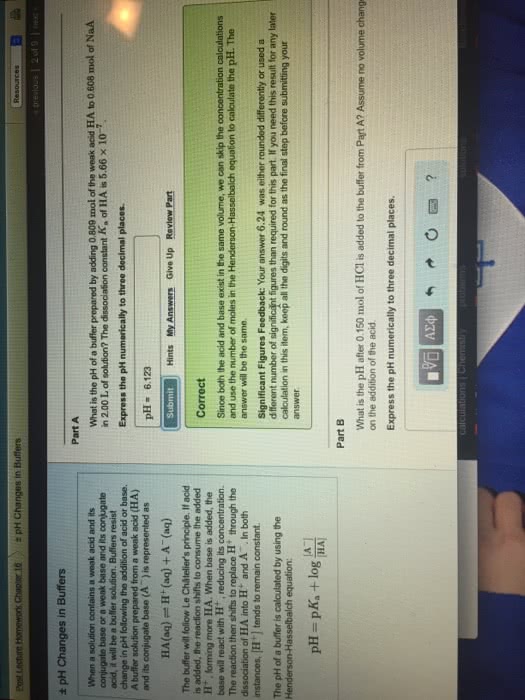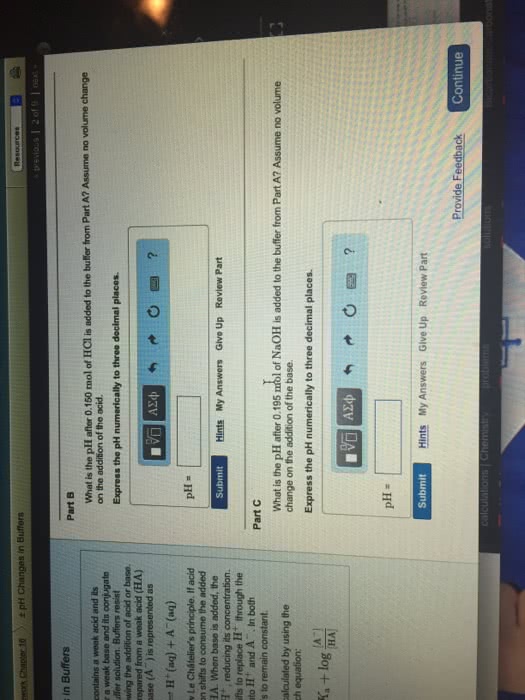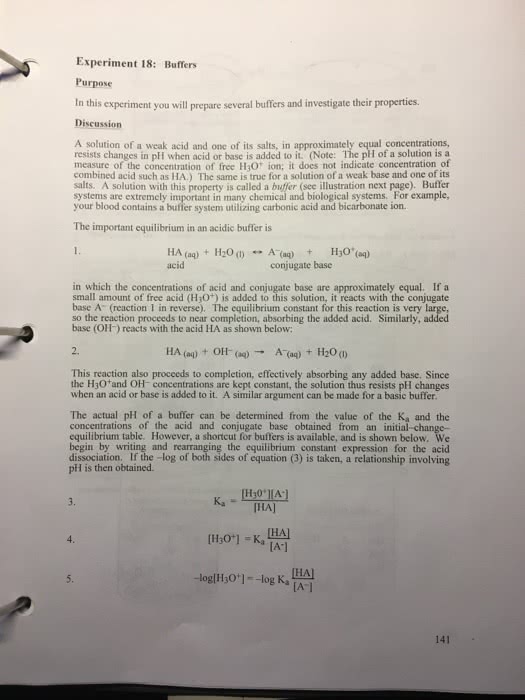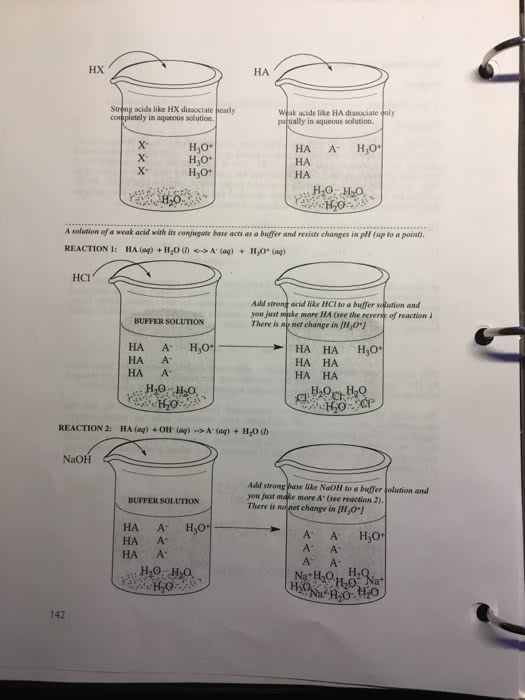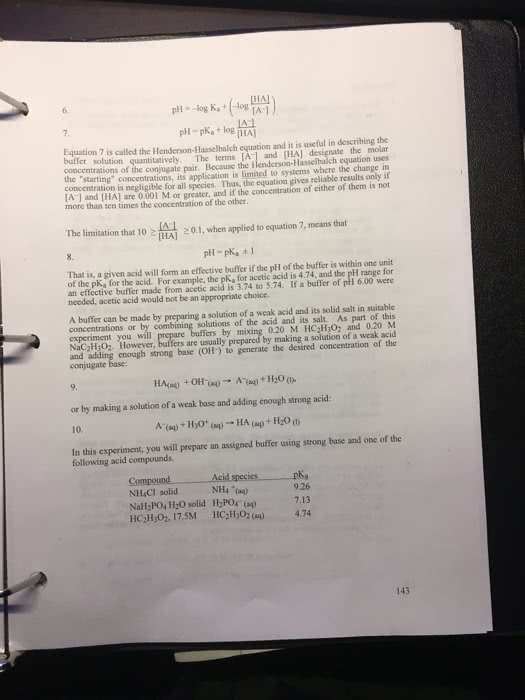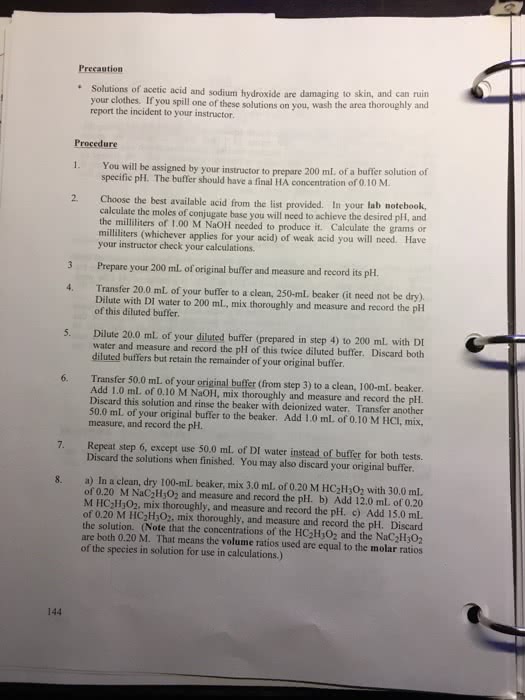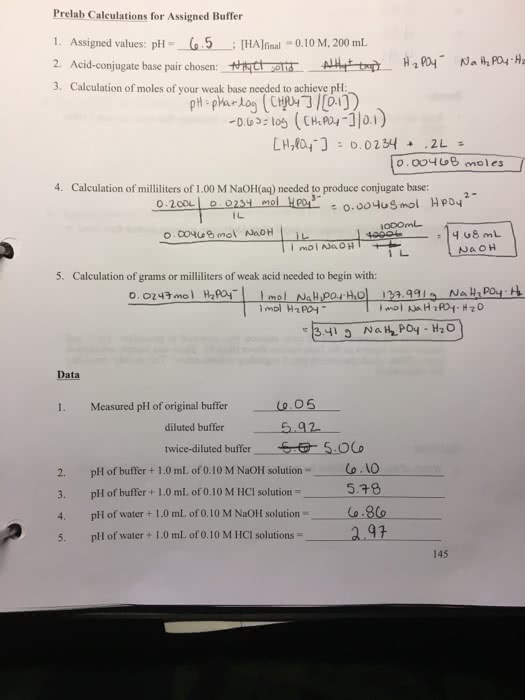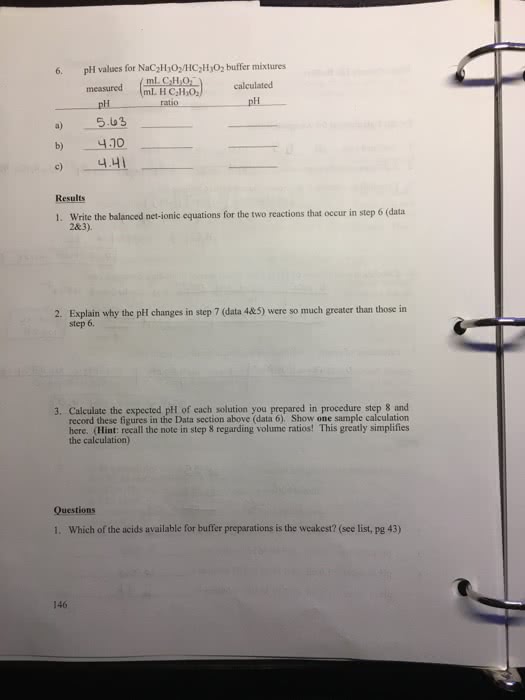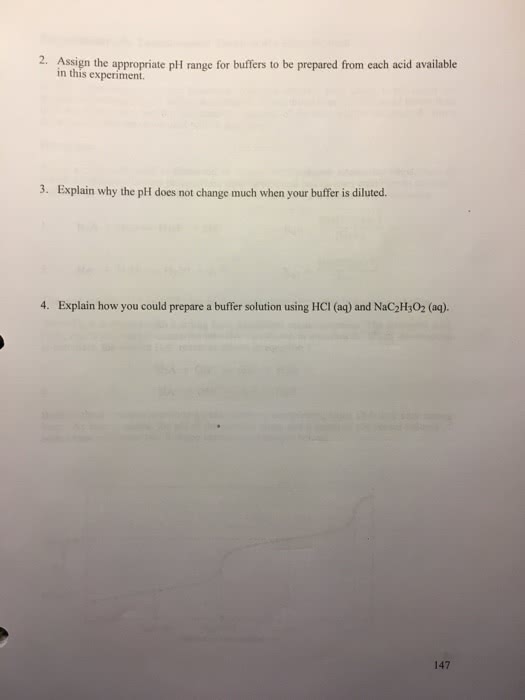CHEM 1001 Chapter Notes - Chapter 17: Titration Curve, Equivalence Point, Conjugate Acid

CHAPTER 17: Additional Aspects of Acid-Base Equilibria
17.1 Common-Ion Effect In Acid-Base Equilibria: suppression of ionization of
weak electrolyte caused by adding more of one of its ionization products.
Can exist from strong acid that produces H3O+.
Due to eqbm expression, if concentration of acid and conjugate base are
same, then Ka = [H3O+] and pH = pKa (half neutralization point of titration
curve)
17.2 Buffer Solutions: pH changes very slightly when acid or base is added.
Has to be weak acid & its conj. base or weak base & its conj. acid base
reacts with H3O+ & acid reacts with OH- when acid/base is added.
Henderson-Hasselbalch equation: pH = pKa + log([conjugate base]/
[acid])
Buffer is effective if ratio of base/acid is between 0.1 & 10, and molarity of
each buffer component exceeds by Ka by at least factor of 100 (so if
simplying assumption is valid)
Find amount of acid/base needed in buffer by finding [H3O+] & plugging in
Ka expression.
Can find how buffer pH was affected using equation & ICE table & equation
again.
Buffer capacity: amount of acid/base tha can be added before pH changes by
more than 2 unit range (+/- 1 unit)
17.3 Acid-Base Indicators: its colour depends on pH of solution to which it’s
added. It’s usually a weak base or acid, & doesn’t affect the eqbm if added in small
amounts.
17.4 Neutralization Reactions and Titration Curves
Equivalence point: point at which both acid & base are consumed
completely. Point when indicator changes colour is endpoint.
Titration curve: graph of pH versus volume of titrant (solution in buret)
added.
Strength of acid doesn’t affect volume of base required to titrate to
equivalence point.
find more resources at oneclass.com
find more resources at oneclass.com
Document Summary
17. 1 common-ion effect in acid-base equilibria: suppression of ionization of weak electrolyte caused by adding more of one of its ionization products. Can exist from strong acid that produces h3o+. Due to eqbm expression, if concentration of acid and conjugate base are same, then ka = [h3o+] and ph = pka (half neutralization point of titration curve) 17. 2 buffer solutions: ph changes very slightly when acid or base is added. Has to be weak acid & its conj. base or weak base & its conj. acid base reacts with h3o+ & acid reacts with oh- when acid/base is added. Henderson-hasselbalch equation: ph = pka + log([conjugate base]/ Buffer is effective if ratio of base/acid is between 0. 1 & 10, and molarity of each buffer component exceeds by ka by at least factor of 100 (so if simplying assumption is valid) Find amount of acid/base needed in buffer by finding [h3o+] & plugging in.


